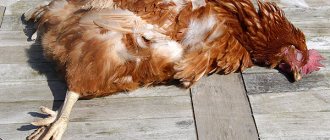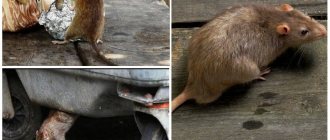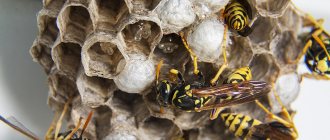The question of whether mice chew polyurethane foam is relevant for everyone who wants to use this product when carrying out repairs. Some people are afraid that rodents will break the seal of the treated surfaces, while others want to protect themselves from uninvited long-tailed guests using foam. The author of the site VredStop.ru has figured out the issue and is ready to share information with readers.
Why do mice chew construction foam?
The first thing that comes to mind when you see uneven holes in a layer of polyurethane foam is that the mice were too hungry and simply dined on a piece of hardened polyurethane. But no. These animals are not so lazy as to chew synthetics. They are more likely to go looking for something edible on the street or in neighboring houses if the owner of the home where they live does not care at all about replenishing food supplies.
In fact, there are three reasons why mice are partial to foam sealant:
- Construction of nests. The airy and soft material is perfect for insulating burrows and creating cozy beds. Naturally, in order to drag it into their underground, mice are forced to bite off small pieces, and each time they do this in a new place. If there is damage over the entire area covered with foam, then this is exactly the case.
- Grinding of teeth. A characteristic feature of all rodents is their teeth, which continuously grow throughout their lives. Nature designed it this way so that animals have the opportunity to eat rough and very hard food, on which the incisors are constantly worn down. Otherwise, the mice would be left without teeth at a relatively young age and die of starvation, without leaving enough offspring, which would have a detrimental effect on the survival of the species. In general, from the point of view of evolution, there are continuous advantages. However, mice that live near humans do not need to gnaw on roots and bark - they eat relatively soft food. Well, in order to wear down teeth, they periodically attack furniture, wires and polyurethane foam.
- Tunneling. These animals cannot safely move around rooms, so they have to gnaw passages inside the walls and ceilings. Naturally, making a long and wide enough hole in brick, concrete and even logs is not an easy task. And construction foam, often used as insulation, is ideal for making a tunnel in it.
Therefore, the statement that mice eat construction foam makes no sense and does not correspond to reality.
What material can rats chew through?
Rats' teeth, like the teeth of many other rodents, grow throughout their short lives. In this regard, they must constantly chew something, otherwise the fangs will grow so large that they will interfere with movement and break.
However, other rodents mainly gnaw only on food or dry plant stems, but rats gnaw through a lot, especially if they live in a barn. But what exactly is subject to the teeth of this pest and what is not, you will learn from this article.
Concrete
Concrete seems to be a very strong material, and it is quite difficult to simply break it. But rats can chew it very easily and simply. This happens for a long time, but it still happens, in which the concrete itself practically turns into Swiss cheese.
This material does not harm the teeth of rats in any way and is easily yielded as soon as they begin to sharpen it. The foundation can withstand several attacks from rats, but a concrete wall will break even faster, since the layer of concrete in it is small, and holes will easily reduce its strength.
To preserve the structures and foundation, a large amount of finely broken glass is poured into the cement mixture. This is the only material that rats cannot chew through in its natural form.
In the form of fragments, it can even kill rodents. Such measures can protect future buildings from collapse, which could be caused by a rat.
Even concrete is too tough for rats
Metal
Unlike concrete, not all metals can be damaged by rats. Iron, for example, will become covered with holes only if it has long been rusted through and very old.
In its new condition it is almost impossible to gnaw through it with rat teeth. But there were cases when rats managed to spoil the plating of ships, which could become rusty in some places.
Basically, hard metals are resistant to rats' teeth. Items containing tungsten, rhenium, beryllium, titanium, osmium, uranium, tantalum, chromium and others will never become covered with holes, especially since most of these metals can be toxic to rats. But they can still pick out shallows or nickel.
Rodents do not disdain metal
Tree
It would seem that since a rat is able to gnaw even concrete, can it destroy a tree? Of course it can. Wood is the very material that rats most often get under their teeth. Walls, floors, furniture - a rodent is capable of riddling all of this with holes in a matter of hours, which will greatly reduce the strength of the structure.
Many people, in an attempt to save their home from pests, coat the walls and floors with soda or peppermint oil, the smells of which drive them away, but this does not help much. The odors quickly disappear, and the rats again continue their destructive activities.
No matter how hard you try, they will still gnaw on the walls of your country houses and barns to get to water and food. The only way to save your walls and floors is to not create living conditions favorable for these rodents, and then they may not appear in your home.
Tree pests destroy quickly
Stone
As with concrete, rats can also chew on stone. They are subject to any natural type of stone that, for some reason, gets in their way. If you have a stone-clad home, it's also pretty easy to turn that into a block of cheese.
And if the stone is artificial or just an imitation, then it’s even easier, because this material will be even more fragile than wood. However, not all types of stones are easily susceptible to the teeth of rats. Basalt, granite, diabase, diorite and other durable rocks are unlikely to crumble if you chew them, but ordinary graphite and the like will give in quickly.
Bricks are also not particularly durable, and rats actively sharpen them. Brick houses quickly lose their strength. But in addition to rocks, rats can also damage some types of precious stones, which are usually found in jewelry boxes.
They will not destroy most of them, but they will scratch and spoil them, which is why the jewelry may lose its presentation. They won't chew gold and silver either.
Even stones can be chewed by rats
Plastic, plastic and things containing it
If it takes a flock of rats about several hours to dig into a tree, then they destroy the plastic in just a few minutes. This is one of the most fragile materials for rodents. Objects decorated with it and things containing it cannot protect themselves from sharp teeth, which is why cables and wires very quickly become unusable. The only thing that can scare away a rat in such situations is an electric shock.
Many people make traps and rat traps that are based on plastic containers: buckets, bottles, boxes and organizers. This won't stop the rat. For some time she will run around in such a trap, then hunger will begin to weigh her down, and she will easily cut herself a window into the world from a plastic bottle. Traps for rats should be either iron or, at worst, made of fine metal mesh, which will be almost impossible to chew through.
As you can see, there are a lot of materials that rats are able to render unusable and gnaw with their ever-growing teeth. However, there are also those that they cannot grind off. If you know about this, then protecting your home and provisions from small toothy raiders will be very simple!
Get rid of these parasites as quickly as possible - there are many ways to combat them!
What to add to the polyurethane foam to prevent mice from chewing it?
In an attempt to protect sealant from rodents, people mix it with various substances. Among them are those that have a toxic effect on mice, as well as those that make the foam taste unpleasant or are designed to cause pain when biting.
The most popular:
- Poisons. They will most likely kill the mouse, but this will not happen immediately. Firstly, since these animals do not eat the foam, but only gnaw holes in it, the toxin does not enter the stomach. In small quantities, it can only be absorbed through the mucous membrane of the mouth. During this time, the mice will have time to cause significant harm, so there will be no benefit from the poison. And secondly, if the poison takes effect and the mouse dies inside the passages it has made, then the unpleasant odor will easily seep out through the porous material and create problems for the residents of the house.
- Broken glass. An ideal option, which, nevertheless, is characterized by cruelty towards animals (even pests). Having started gnawing on the foam, the mouse will stumble upon sharp fragments that will injure its palate and tongue, after which it will completely lose the desire to touch such sealant.
- All kinds of flavoring additives. If they are added to human food in order to enhance and improve the taste, then in the case of mice it’s the opposite - you need to make the foam tasteless. Hot ground pepper can be used as such an additive, but you will need a lot of it, and over time it will lose its hot properties. Boric acid is also used, which gives the sealant a bitter taste.
- Glass wool. For obvious reasons, mice do not like to chew it. Since it will not be possible to mix this material with foam, they do it differently - when insulating the walls, they first lay a layer of glass wool, and then apply polyurethane foam on top of it.
There are no special additives developed by the industry to protect sealant from rodents.
We look for rodents by smell, squeaking and other traces
Domesticated rats are cute and quite affectionate creatures. That is why a collision between a person and a wild rodent most often ends unsuccessfully: few people can imagine how dangerous cornered animals are. And when they sneak into the house, rustle at night, damage food and wiring, you need to take decisive action. After all, wild rodents are not at all like domesticated rats and mice - they are dangerous, insidious and very smart. Therefore, finding them is more difficult than it seems at first glance: you will have to use all your skills and abilities.
How to track a rat: basic methods
It is difficult not to notice the presence of a rat in the house: although it acts at night, it leaves quite a few signs. It could be spoiled food, wiring, pipes, furniture - traces are found throughout the apartment.
Anyone who is a light sleeper will hear a frightening sound: a quiet rustling and squeaking at night. During the day, rats rarely appear in the home - only in cases of emergency. However, this also happens, then you need to immediately catch the pest.
If you don’t find the parasite during the day, you will have to resort to special methods to find the rodent. Most often they hide in the following places:
- Most often, rats hide in secluded places, cracks in the walls;
- holes in the floor;
- cabinets;
- fabrics;
- baseboards and nooks behind furniture.
When looking for a pest, you need to start by looking for the gap through which it enters the house. Usually these are cracks near pipes, ventilation ducts or other holes that are in the floor. However, if they are not there, this is not a problem at all for rats - they are excellent at gnawing their passages to where they need to go. Once a hole has been found, it must be sealed immediately. Moreover, not just polystyrene foam, but preferably cement or concrete, adding thick broken glass to it.
Immerse yourself in complete silence
Listening is the main method in manually catching a rodent. You need to create perfect silence and preferably turn off the lights. Soon the rat will reveal itself by rustling and squeaking. You will hear the noise of paws knocking on the surface and the sound of sharpening teeth - if the rat starts gnawing on something. Sometimes it happens that a sound is heard behind a wall or under the floor: this means the rat is somewhere nearby, but not yet in the room.
Therefore, after determining the location of the rat, it needs to be lured out. If a rat squeaks in a closet or digs around near a trash can, you can grab it with a towel and take it away from the house. Otherwise, you need to prepare a trap. For example, put a jar, first coat its walls with oil so that they become slippery, and lay a path to the jar so that the rat can climb into it. The jar can be left tilted. There are other ways to catch the “night guest”.
Near the rodent burrows, where their traces were found, you can leave various types of traps: glue, mechanical, electrical and others. They can be purchased at a special store.
Ultrasonic rat repeller
It is not recommended to use poison: the rat may die from it between the walls or under the floor, where it will not be accessible. As a result, the noise and squeaking at night will disappear, but an unpleasant odor will appear, which will be difficult to get rid of for many years.
The sound that rats make is easy to hear in silence, so it will be easy for a person to understand whether there are still rats left in their shelter. It’s not for nothing that they say that where there is one rat, there are ten more. If you managed to get rid of one rodent, this does not mean that new ones will not appear. Therefore, the best method is to determine where the rodents are coming from and limit their entry. In this case, it is better to use repellers rather than traps. Soon, both the sound of rats and the damage to things will stop on their own: traces of rodents in the apartment will disappear.
How to treat polyurethane foam to repel mice?
If the foam was used without adding the substances mentioned above, it can still be protected from rodents. To do this, the repellent is applied over the sealant.
Depending on the period for which you need to provide protection, there are several options:
- Rodent spray. It works well, but the effect after its use lasts only two weeks. After this period, you should reapply the spray or use other methods.
- Glass chips. It should be quite small. It can be applied immediately to foam that has not yet hardened - adhesion will be ensured due to the texture of the sealant itself. But if the foam has already dried, then the surface will have to be pre-treated with glue.
- Boric acid powder. It, like glass, is poured on top of foam.
It is important to understand that glass and boric acid, being outside, will not affect rodents in any way when they decide to make passages inside the sealant. So when applying a thick layer of foam, it is better to use additives.
The capital's rats even gnaw through concrete
August 14, 2008 1:00 39
Moscow is a city of rats. You go to work and a gray animal slowly walks along the sidewalk. When you take out the trash, there is a whole team of rats at the container. Are rats dangerous for us? Is it possible to rid Moscow of them? I decided to find out and applied for a job at a company that exterminates rodents.
Rich City Disease
- Pee-pee-pee-pee. — A vile squealing sound can be heard from the basement dormer window. My cheekbones are cramping.
- What if they rush? — I grab my partner Mikhail’s sleeve.
- Why the hell do they need us! Hold the bag. — Mikhail hands me a trunk with poisoned bait and takes out the key to the basement. Misha is an employee of a private company that treats basements for rodents. He and I walk around houses in a residential area in the northeast of the capital. The task is simple - lay out bait for rats so that they eat and die. As soon as we open the door to the basement, we hear rustling. Then - clack-clack-clack - the rats are running away from the light coming from the open door. There are no light bulbs in the basement.
- Do you see the hole? — Mikhail shines a flashlight on a gap in the concrete with smoothly polished edges. - This is a hole. They climbed here and there and cleaned the entrance until it was shiny!
He places a paper bag next to the hole. The bag smells like smoked sausage.
“The bait there is poison mixed with paraffin,” explains my colleague. — The rat will chew the bag and eat everything.
- And will he die immediately?
- In no case! Then other rats will not eat this poison. They're smart. The poison is slow. They will eat the bait several times, get poisoned properly, and after 4 - 5 days that’s it! In July, when it was hot, the rats went well to the water. Let's pour it into the drinking bowls and add poison on top.
Let's go to another hole.
“There’s a garbage chamber nearby—where waste is dumped from the garbage chute,” explains Mikhail. “And they gnawed the entrance to the cell.” Do you see the hole?
Indeed, below, near the floor, there is a hole in the wall.
- What, they even ate through the concrete?
- Certainly! Rats are constantly gnawing on something, otherwise their teeth would grow by 10-12 centimeters per year,” explains Misha. “They eat electrical cables too.” And then the fires. Looks like a short circuit. But in fact, the rodents tried.
Mikhail coats the edges of the hole with poisonous paste. The rat gets dirty, then licks itself and gets poisoned.
“To be honest, our poison is cheap,” sighs a colleague. — To win a competition for home maintenance, you need to offer the lowest price. And the lower the price, the worse the drug.
No one knows how many rats there are in the capital. According to zoopsychologist Andrei NEURONOV, from 500 thousand to a million gray animals have Moscow “registration”. According to Alexander MININA, Doctor of Biological Sciences, leading researcher at the Institute of Global Climate and Ecology, there are from 10 to 20 million rats in Moscow. The creators of the “Red Book of Moscow” believe that there are up to 40 rodents for every city resident. And if you consider that, according to the latest data from the Moscow City Statistics Service, there are now about 10.5 million people in the capital, then 420 million rats live here!
“There have always been rats in the capital, and it is completely impossible to get rid of them!” — says the head of disinfection station No. 2, Alexander SLOBODIN. — Moscow is a rich city, people have high incomes. Hence there is a lot of shopping and a lot of garbage and food waste. And the more waste, the more rats. The only thing we can do is curb the growth of the population. The main thing here is to keep the city clean, that is, to deprive the rats of food and drink.
Alas, in our country rats live even in supermarkets, where, it would seem, there should be exemplary cleanliness.
“We constantly write off products because we find rat droppings or teeth marks on them,” Nadezhda RAEVA, head of the food hygiene department of the Rospotrebnadzor department for the Moscow region, explained to Komsomolskaya Pravda. — The last time such a case happened was in one of the stores in the Dmitrovsky district.
The gray creatures also bite Muscovites themselves. Last year, I went to the emergency room with complaints - a rat attacked me! - 350 citizens appealed.
“If you are bitten by a rat, it is not enough to lubricate the wound with iodine,” says Alexander Slobodin. — Rodents transmit pseudotuberculosis, leptospirosis, hemorrhagic fever and dozens of other diseases. Therefore, after a bite, you should definitely consult a doctor!
Generals of the capital's basements
The owners of all Moscow buildings, by order of the mayor, are required to enter into an agreement to kill rats. And they conclude. But here’s the problem: whoever has to poison the tailed ones. In the capital, in addition to the Moscow City Disinfection Center, there are about 200 private companies providing deratization services - getting rid of rodents.
— Their activities are not licensed. And sometimes companies, saving on wages, hire people off the street and use cheap, ineffective drugs,” complains the chief specialist of the Disinfection Center Lyudmila RUMYANTSEVA. “Besides, everyone acts separately. In one house, rodents began to be poisoned - they immediately moved to another.
Experts sigh: Moscow rats are very smart. In the mid-90s, ultrasonic repellent devices began to be installed in the basements of new buildings in the capital. And what? The rats instantly realized where the radiation was directed and simply avoided the danger zone! Rodents also try not to touch electrical wires that cause electric shock (this expensive system is usually installed in fancy offices). Of course, grays still die from other poisons. But the next generation is already eating “chemicals” - and even henna!
“The trouble is that our basements are wet.” A poisoned rat will drink some water and come to its senses,” explains Lyudmila Grigorievna. - Well, everything is like with people.
What to do? What to do if rats have settled in your basement? Complain to DEZ. Does not help? Write a collective statement addressed to the head of the council. Please note: you need to demand not only the arrival of “poisoners”. Ask that the basement be cleared of debris, that the pipes there be repaired so they don’t leak, and that the cracks in the garbage chute and garbage disposal be sealed. And also, if possible, move the garbage containers away from the house. Deprive rats of water and food. And they will leave on their own.
Useful phone
(495) 183-56-92 - Moscow City Disinfection Center.
If you have rats in your basement, call and complain. Calls are accepted on weekdays from 9 a.m. to 4 p.m.
TOLD
— When I worked as the chief sanitary doctor at the Moscow Metro, we walked around at night and checked the tunnels. And I saw these beauties that gnawed through electrical cables, which caused them to fail and even stop trains. Although Moscow is a fairly clean city, the number of rats in it is very high. There are many more of them than people.
Gennady ONISCHENKO, Chief Sanitary Doctor of Russia.
BY THE WAY
There are no mutants in the subway
Polyurethane foam against mice
For many years now, a polyurethane foam called Pestblock has been available on the European and American building materials markets. It is known for its properties against mice, ferrets and even cockroaches. Having bitten off a piece of such material, the animal will not die, but it will also not have the desire to repeat this action - the sealant has such a vile taste.
The only drawback of Pestblock can be considered its absence in stores in Russia and other CIS countries. However, if desired, foam can be ordered via the Internet - for example, on Amazon or Aliexpress. Whether such a purchase will justify its cost is something everyone decides based on their specific situation. When it comes to insulating your home, you can use alternative materials that are unattractive to rodents instead of foam. One of these is expanded clay.
As it became clear from the above, mice do not eat construction foam, but they chew it with pleasure. To avoid damage, you need to add a substance to the sealant that repels pests with taste or traumatic effects.
AfterText #1
Myths about rats
Depending on living conditions and food resources, a female rat can give birth several times a year, usually in a litter of 8-10 rats, and there are cases when the litter reaches 16 pieces.
At the very beginning of 2008, which is the year of the Yellow Rat, we decided to put together all the existing myths about these nimble, tenacious, cunning animals. Most of us still don’t like rats and are afraid of them; there are all sorts of legends about them. The weekly magazine “SM Number One” decided to find out which of the existing myths are reliable and which are not.
Protection against rodents during construction
Why at this stage? Yes, because it is much easier to prevent a rodent invasion than to fight them later. And the myths that there are no barriers for mice who want to get into the house are still myths. With a creative and attentive approach to this issue, you can completely ensure that such a misfortune never occurs in your home or bathhouse.
But first, you can carefully study the current building codes, which list grilles, metal screens and other methods of protection. But remember, when installing a metal profile against mice, you must leave a gap so that the insulation does not get wet from condensation.
Method #1 - expanded clay castle
Here we are talking about the so-called “expanded clay castle”, when a layer of expanded clay is laid especially tightly and at least 10 cm thick. Here is a standard floor pie that is protected from mice during the construction of a house:
- 1st layer: lay expanded clay (fired clay) directly on the ground. The layer should be at least 30 cm thick. Cover with plastic wrap.
- 2nd layer: lay OSB-3 boards in two layers.
- 3rd layer: put expanded clay again.
- 4th layer: cover with oriented strand boards impregnated with synthetic wax and boric acid. These substances are good at repelling rodents.
As you can see, nothing complicated.
Method #2 - fine mesh
The simplest and most effective method of mechanical protection against mice even at the construction stage can be called galvanized mesh. It should be made of durable metal and with small cells. Much smaller than you now imagine. Now we will explain why: the mouse’s skull has the ability to “fold”, like that of a newborn, and therefore this animal will really fit where a pencil fits, as biologists like to say.
So, it is advisable to lay the metal mesh over the subfloor during construction and additionally wrap it around the base if you live in a private house. And how to arrange floors with it, you can take a closer look at our photo instructions:
If possible, cover all corners (floor, wall, and ceiling) with mesh, which is usually used for plastering. Don't miss a single connection.
Sometimes this material is used to protect against mice even after construction, when a problem with rodents becomes obvious. To do this, bury it around the foundation to a depth of 80 cm. If you notice already dug holes, then go even deeper. And place a mesh at least a meter high under the plinth sheathing.
The foundation of the house is also sheathed with a 1.5 mm profiled sheet of structural steel. This is also good additional protection.
Method #3 - leave mice under the floor
If you are satisfied that there will still be a small number of mice under the floor, but will not penetrate into the house itself, then make a cake like this:
- Step 1. Forget about insulation. A floor without mice is a floor without any cotton wool or polystyrene foam. Just make a shield - a floorboard right along the joists.
- Step 2. To prevent mice from getting into the gap between the edge of the floor and the outside sheathing, cut 10 cm strips of galvanized steel and nail them on top of the floor.
- Step 3: Cover these strips at the top with insulation and sheathing.
These are the simple, proven recipes. The main thing is don’t give up!
Yes, I sympathize, we filled the entire perimeter with a solution containing broken light bulbs, carried poison into the basement, nothing helped - then we got a cat, there have been no mice for 3 years. If you don’t want to stay forever, foster a cat for a month; perhaps this will be the best solution.
I got dark in the middle of the month! mice .. gnaw concrete and climb into the apartment. I already found a hole. concreted. There are cardboard boxes with glue and mousetraps everywhere in the apartment.. today I found a bunch of excrement again.. what should I do? who to call.. I have no idea what they are doing on the 12th floor. I’m already afraid to sleep, I listen to everything... it’s disgusting to the point of horror!:001:
Is the 12th floor the last?
wow.. where is this horror in Kupchino?
Malaya Balkanskaya:001: tomorrow I will call the SES then.. the cat is not helping, although she is now at the dacha:005:
One of us fell like that in the toilet. I poured her some wine, and when she was already drunk, she calmly caught it and gave it to her neighbor (he generally loves all rodents, that mouse still lived with him for a year). Well, the ventilation, of course, was closed with nets, grilles and fans. Dear Mom:001:Mice drink wine.
The mice forgot their way to us after the neighbors domesticated the cat family from the basement. It is now decent, it lives in the entrance of its own plywood house, with bowls and bedding :)









